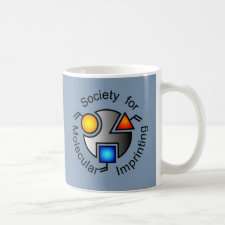
Authors: Kobayashi T, Kusunoki T, Zhang Q, Takeda K
Article Title: Bile acid imprinting polymers prepared by covalent-ester monomer-template technique: Synthesis, characterization and fluorescence application for BA recognition.
Publication date: 2007
Journal: Journal of Chemical Engineering of Japan
Volume: 40
Issue: (6)
Page numbers: 516-522.
DOI: 10.1252/jcej.40.516
Alternative URL: https://www.jstage.jst.go.jp/article/jcej/40/6/40_6_516/_article
Abstract: Molecular imprinted copolymers, which highly recognized and bound bile acid (BA), were synthesized using a covalently imprinting technique. BA triacrylate (BAA) was a novel monomer targeting the BA imprinting by copolymerizing with a crosslinkable monomer of divinylbenzene (DVB). The resultant copolymer was treated under an acidic condition to form comprehensive BA imprinted sites in the DVB copolymers. The resultant BA imprinted copolymers had less bindings to deoxycholic acid and cholesterol relative to BA. The value of the binding amount of BA for the imprinted copolymer was 22.6 μmol/g, indicating an excellent binding capacity for a template molecule. The recognition ability of the imprinted copolymer was probed with fluorescence of DVB segments in the copolymers: When exposed to the 300 nm light, the fluorescence of the phenyl segments of DVB was observed in the substrate solution. It was found that the BA imprinted copolymer enhanced the monomer fluorescence intensity of the DVB segments near 346 nm, as BA bound. However, when other substrates bound, the segments enhanced the excimer intensity observed near 435 nm. The comparison suggested that the BA binding to the imprinted sites was favorable for the enhanced monomer fluorescence, because comprehensive binding of the molecule into the imprinted DVB segments interfered the excimer formation of the phenyl groups in the copolymer. Copyright ® 2007 The Society of Chemical Engineers, Japan
Template and target information: bile acid, BA, bile acid triacrylate, BAA, cholic acid, deoxycholic acid
Author keywords: adsorption, Bile acid, fluorescence, molecular imprinting



Join the Society for Molecular Imprinting

New items RSS feed
Sign-up for e-mail updates:
Choose between receiving an occasional newsletter or more frequent e-mail alerts.
Click here to go to the sign-up page.
Is your name elemental or peptidic? Enter your name and find out by clicking either of the buttons below!
Other products you may like:
 MIPdatabase
MIPdatabase









